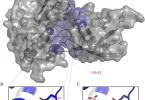Researchers from the German center for Neurodegenerative sicknesses (DZNE) have found that the protein medin co-aggregates with amyloid-β inside the blood vessels of the brains of Alzheimer’s patients. Their findings were recently published in the prestigious journal Nature.
“Medin has been recognised for over two decades, but its impact on illnesses changed into formerly underestimated. We were capable to reveal that pathological adjustments in the blood vessels of Alzheimer’s sufferers are considerably better with the aid of medin,” says Dr. Jonas Neher from the Tübingen website online of the DZNE, who led the observe.
The Hertie Institute for medical brain research in Tübingen, the university of Tübingen, and various worldwide institutions and companions have been additionally involved on this lengthy-time period project.
Medin belongs to the group of amyloids. of these proteins, amyloid-β is nice recognized as it clumps collectively within the brains of Alzheimer’s patients. those aggregates then deposit each as so-referred to as plaques without delay within the mind tissue, but additionally in its blood vessels, thereby damaging the nerve cells and the blood vessels, respectively. but whilst many studies have targeted on amyloid-β, medin has now not been a focal point of hobby. “there was little evidence of pathology, that is, of a clinically striking locating related to medin – and this is frequently the prerequisite for a more in-depth have a look at of an amyloid,” Jonas Neher explains.
but, medin is absolutely located within the blood vessels of just about all people over 50 years of age, making it the maximum not unusual amyloid recognized. together with his crew, Jonas Neher initially located that medin even develops in getting older mice, and suggested this discovery two years in the past in the scientific magazine PNAS. The older the mice get, the more medin accumulates within the blood vessels of their brains, became the finding at the time. What’s more, when the mind turns into active and triggers an increase in blood supply, vessels with medin deposits expand extra slowly than the ones without medin. This ability of blood vessels to amplify, but, is essential to optimally supply the mind with oxygen and nutrients.
for his or her latest outcomes, the researchers constructed in this basis and seemed specifically at Alzheimer’s sickness. First, they had been capable to reveal in Alzheimer’s mouse fashions that medin accumulates even more strongly within the mind’s blood vessels if amyloid-β deposits also are present. Importantly, these findings had been confirmed while brain tissue from organ donors with Alzheimer’s dementia was analyzed. however, when mice had been genetically modified to save you medin formation, notably fewer amyloid-β deposits developed, and as a end result, less damage to blood vessels came about.
“There are handiest a handful of research companies worldwide working on medin at all,” says Jonas Neher. maximum recently, a take a look at from the U.S. mentioned that medin levels can also growth in Alzheimer’s sufferers. but, it remained doubtful whether or not this growth is simply a effect of the sickness or whether it’s far one of the causes.
“we’ve now been in a position to expose thru many experiments that medin without a doubt promotes vascular pathology in Alzheimer’s fashions,” Neher stated. So medin deposits are indeed a purpose of blood vessel damage. “And this shows that medin is one of the reasons of the disease,” Neher stated.
of their studies, the researchers stained tissue sections from each mice and Alzheimer’s sufferers in one of these manner that specific proteins come to be visible. This allowed them to expose that medin and amyloid-β are deposited together in blood vessels of the mind – co-localization is the technical term for this. inside the subsequent step, they have been capable of show that these amyloids also co-mixture – that is, shape blended deposits.
“Amazingly, medin interacts without delay with amyloid-β and promotes its aggregation – this turned into completely unknown,” Jonas Neher summarizes the effects.
it’s miles exactly from this perception that the researchers draw hope for the development of a new treatment. “Medin can be a healing goal to prevent vascular damage and cognitive decline on account of amyloid accumulation inside the blood vessels of the brain,” they conclude. it’s far undisputed among professionals that further to amyloid-β aggregates in brain tissue, the development of Alzheimer’s disorder is also promoted with the aid of vascular changes – this is, decreased function or harm to blood vessels. therefore, treatments that target now not simplest plaques but also affected blood vessels ought to help sufferers.
subsequent, it’s going to now be vital to determine if medin aggregates may be eliminated therapeutically and whether or not this intervention truely has an effect on cognitive performance. The scientists first want to test this in mouse fashions, due to the fact these replicate the pathological changes in Alzheimer’s sufferers very well.
Reference: “Medin co-aggregates with vascular amyloid-β in Alzheimer’s disease” by using Jessica Wagner, Karoline Degenhardt, Marleen Veit, Nikolaos Louros, Katerina Konstantoulea, Angelos Skodras, Katleen Wild, Ping Liu, Ulrike Obermüller, Vikas Bansal, Anupriya Dalmia, Lisa M. Häsler, Marius Lambert, Matthias De Vleeschouwer, Hannah A. Davies, Jillian Madine, Deborah Kronenberg-Versteeg, Regina Feederle, Domenico Del Turco, ok. Peter R. Nilsson, Tammaryn Lashley, Thomas Deller, Marla Gearing, Lary C. Walker, Peter Heutink, Frederic Rousseau, Joost Schymkowitz, Mathias Jucker and Jonas J. Neher, sixteen November 2022, Nature.







